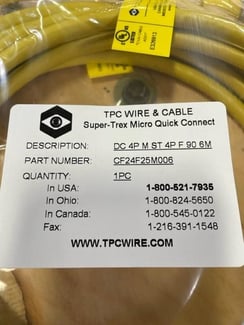.png?width=600&name=MicrosoftTeams-image%20(18).png)
Part numbering disciplines and processes have changed over the years and most manufacturers use either Non-Intelligent or Intelligent part numbering schemes. If you are trying to decide what part numbering system works best for you, read below and consider all the advantages and disadvantages of intelligent vs. non-intelligent part numbering commonly used in industrial manufacturing today.
Non-Intelligent & Intelligent Part Numbering Systems
Non-Intelligent Part Numbering – Also called Non-Significant part number sequencing.This part number does not provide any information about the part. Non-significant part numbers are typically serial or in numerical order, regardless of the type of part.
Advantages:
- Simple to assign
- Faster to enter into computer systems
- Simple to reserve in large blocks for contract design
Disadvantages:
- Difficult to invent "on the fly" without fear of duplication
- Unhelpful for deciphering proprietary information
- Not constrained to a specific product, project, plant or customer
Intelligent Part Numbering – Also called Significant part number sequencing.
This smart part number contains descriptive and informative details that provide significant information about the part.
Advantages:
- Convenience: The ability to tell at a glance the essential characteristics of a part
- Design Efficiency: Structure documentation and spreadsheets by product type and then more easily search, sort and create new items
- Search Efficiency: By using part of the smart part, you can search your database and locate similar items within the group
- Sequence Efficiency: Duplicate part numbers are automatically prevented based on rules that include product class and attributes
- Error reduction: This scheme provides a frame of reference for each part by specifying the group to which it belongs, making it easy to sort & identify by product category
- Process improvements: Significant part numbers allow parts to be received, stocked and accessed more efficiently. As part classes are handled the same way, steps can be predefined for part number classes or categories and new parts easily be incorporated into the system
- Getting too Complex: A part system that encodes all meaningful attributes of each part would be impossible to manage. This "super-smart" part number could include all physical dimensions, materials and properties, regulatory conformance, inspection and test procedures and a host of other attributes. A super-smart part number could easily be longer than the part's description!
How ATPC Utilizes an Intelligent Part Numbering System

- All Cordset parts begin with “C”, all Receptacle parts start with “R.” A two-letter prefix defines the cord set category, CL = Minis, CF = M12 DC Micros, etc.
- Connector head configurations are consistent across cordset styles. For example, “A” = straight Male, “C” = straight Female, “E” = straight Male / straight Female
- Quick-Connex™ categories have a specific family of cables that apply, further defined by the number of pins/poles of the connector matched to the no. of conductors in the cable
- Unit of Measure for cordset lengths can be “F” = Feet, “M” = Meters or “A” = Inches
- Lengths of cordsets are defined by three digits, 5 = 005 or 50 = 050
Why does an Intelligent Smart part numbering system work for our Quick-Connex™ cordsets?
- Consistent in length & format, it is easy to identify missing or extra characters, quickly identifying incorrect part numbers
Quickly and efficiently able to create new part numbers in our database and eliminates the chance of duplicating part numbers
Fully compatible with interchangeable part attributes
Part records have consistent item descriptions based on the category and part type - All parts in a specific group share the same attributes –, temperature rating, material construction, specified family of cables, UL, CSA documentation, etc.
- Any new items created also share those attributes.
Easy to create part number alternations within a product group for different head configurations or different cable lengths

